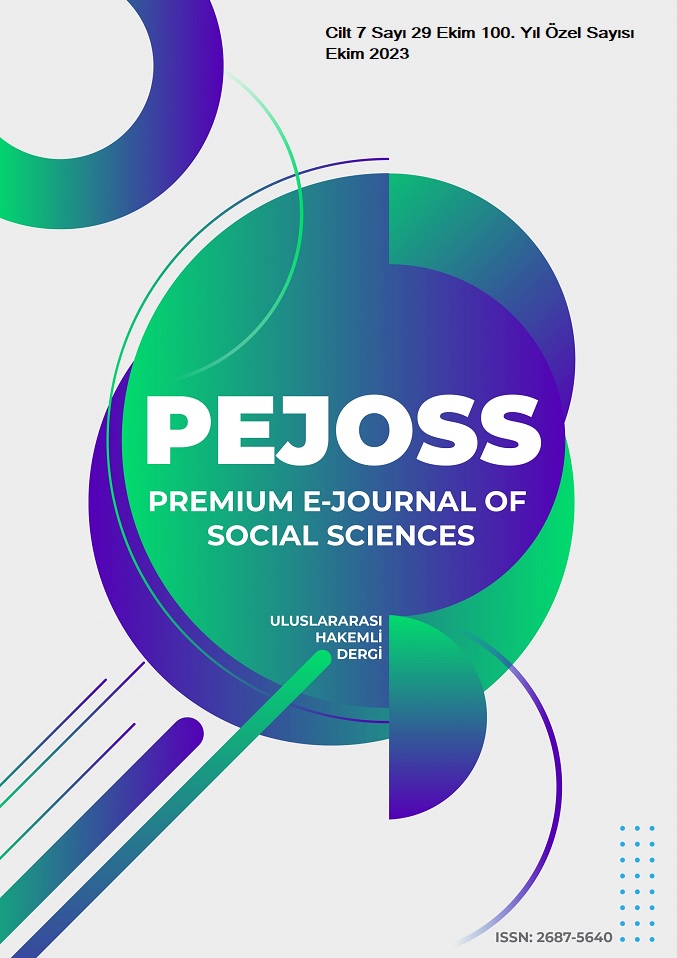A Theoretical Approach to Migrant Youth and Criminality
DOI:
https://doi.org/10.5281/zenodo.10052004Keywords:
Migration, Criminality, Migrant Youths, Criminological TheoriesAbstract
The relationship between migration and criminality has long been a debated issue in public debates and academic research. Although the public discourse and classical theoreticians usually tend to believe that migrant youths are more criminal than their local counterparts, increasingly higher numbers of studies have shown that migrant groups generally have lower rates of crime and criminality compared to local groups. Due to the recent wave of migration in recent years and the global concern about the effects of this development on the social prosperity of host communities, there has been an increasing need for social scientists to propose more integrative theories on the effects of migration on criminality.
Commitment to family and school, commitment to education, and belief in the law have a complete mediator effect in the positive relationship between migration and criminality. It was seen that the crime rates among first-generation migrant youths were significantly lower than those among later generations of migrant youths. These findings showed that acculturation had negative effects on familial and academic processes, and this influenced criminality. This study presents a comprehensive outlook into basic theoretical explanations of criminality among migrant youths by discussing the topic in the context of criminological theories.
Downloads
References
Adli Sicil ve İstatistik Genel Müdürlüğü (2021). Adli İstatistikler. https://adlisicil.adalet.gov.tr/Resimler/ SayfaDokuman/310520221416422021H%C4%B0ZMETE%C3%96ZELK%C4%B0TAP.pdf
Agnew, R. & White, H. R. (1992). An Empirical Test of General Strain Theory. Criminology 30, 475–500.
Bankston III, C. L. (1998).Youth Gangs And The New Second Generation: A Review Essay. Aggression and Violent Behavior, 3 (1), 35-45.
Bui, H. N. (2009).Parent—Child Conflicts, School Troubles, and Differences in Delinquency Across Immigration Generations. Crime & Delinquency, 55(3), 412-441. https://doi.org/10.1177/ 0011128707306122
Butcher, K. F. & Piehl, A.P. (1999). Cross-city evidence on the relationship between immigration and crime. Journal of Policy Analysis and Management, 17(3), 457-493. https://doi.org/10.1002/ (SICI)1520-6688(199822)17:3<457::AID-PAM4>3.0.CO;2-F
Delice, M. &Yaşar, M. (2014). Göç ve Şiddet Suçları İlişkisinin İncelenmesi. Akademik Bakış Dergisi, 44, 1-18.
Dipietro, S. M. & Mcgloin, J. (2012). Differential Susceptibility? Immigrant Youth and Peer Influence. Criminology, 50(3), 711-742. https://doi.org/10.1111/j.1745-9125.2012.00273.x
Emin, M. N. (2019). Savaşın Çocuklarını Eğitimle Kazanmak. Kriter Dergisi. https://kriterdergi.com/dosya-turkiyedeki-suriyeli-multeciler/savasin-cocuklarini-egitimle-kazanmak
Escobar, J. I., Nervi, C. H. & Gara, M. A. (2000). Immigration and Mental Health: Mexican Americans in the United States. Harvard Review of Psychiatry, 8(2), 64–72.
Hagan,J. , Levi, R. & Dinovitzer, R.(2008). The Symbolic Violence of the Crime-Immigration Nexus: Migrant Mythologies in the America. Criminology & Public Policy, 7(1), 95-112. https://doi.org/ 10.1111/j.1745-9133.2008.00493.x
Jang, J. S. (2002). Race, Ethnicity, and Deviance: A Study of Asian and Non-Asian Adolescents in America. Sociological Forum, 17(4), 647–680.
Kao, G. & Tienda, M. “Optimism and Achievement: The Educational Performance of Immigrant Youth.” Social Science Quarterly 76 (1995): 1–19.
Kızmaz, Z.(2018). Suriyeli Sığınmacılar: Güvenlik Kaygıları Ve Suç. Bitlis Eren Üniversitesi Sosyal Bilimler Enstitü Dergisi, 7(2), 392-431.
Koç, M. (2020). Suriyeli Sığınmacılar Bağlamında Suç-Göç İlişkisi. 21. Yüzyıl Dergisi. https://21yyte.org/ tr/merkezler/islevsel-arastirma-merkezleri/suriyeli-siginmacilar-baglaminda-suc-goc-i-liskisi.
Leheny, G. (2006). Think Global, Fear Local: Sex, Violence and Anxiety in Contemporary Japan. Cornell University Press.
Miller, H. V. & Gibson, C.L. (2011). Neighborhoods, Acculturation, and Victimization among Hispanics: The Cross-Fertilization of the Sociologies of Immigration and Crime. Journal of Contemporary Criminal Justice, 27(1), 4-17. https://doi.org/10.1177/1043986210396206
Model, S. (1995). West Indian Prosperity: Fact or Fiction? Social Problems, 42(4), 535–553.
Pala, N. S. (2021). Kayıp Sığınmacı ve Göçmen Çocuklar Raporu. Bilge Kadın Araştırma Merkezi. https://docs.google.com/document/u/0/d/1xCtGOJAOnym-mERfarWxUigckgl26c6Y/mobilebasic.
Quillian, L. & Pager, D.(2001). Black Neighbors, Higher Crime? The Role of Racial Stereotypes in Evaluations of Neighborhood Crime. American Journal of Sociology, 107(3), 717-767. https://www.journals.uchicago.edu/doi/10.1086/338779
Thomas, P. M. (2011). Theoretical Articulation on Immigration and Crime. Homicide Studies, 15(4), 382-403. https://doi.org/10.1177/1088767911424539
Mülteciler Derneği (2021). Türkiye’deki Suriyeli Sayısı. https://multeciler.org.tr/turkiyedeki-suriyeli-sayisi/
Warr, M.(2005). Making Delinquent Friends: Adult Supervision and Children’s Affiliations. Criminology: An Interdisciplinary Journal, 43(1), 77-406. https://doi.org/10.1111/j.0011-1348.2005.00003.x
Weeks, J. R. (2011). Population: An Introduction to Concepts and Issues. Wadsworth Publishing Company.
Yüzyıl Türkiye Enstitüsü (2021). Geçici Koruma Altındaki Suriyelilerin Suç İstatistikleri. https://21yyte.org/tr/merkezler/islevsel-arastirma-merkezleri/gecici-koruma-altindaki-suriyelilerin-suc-i-statistikleri
Downloads
Published
How to Cite
Issue
Section
License
Copyright (c) 2023 Premium e-Journal of Social Science (PEJOSS)

This work is licensed under a Creative Commons Attribution 4.0 International License.


